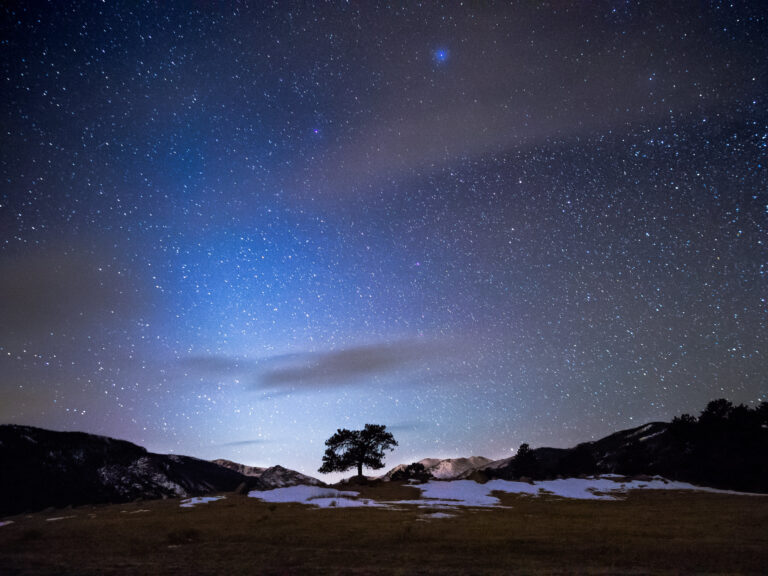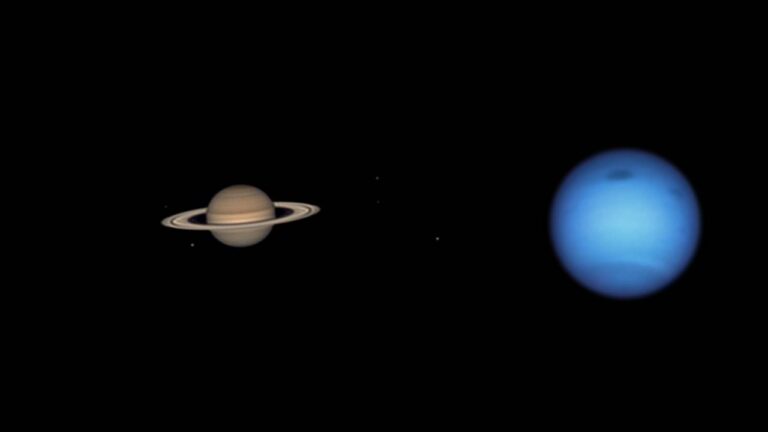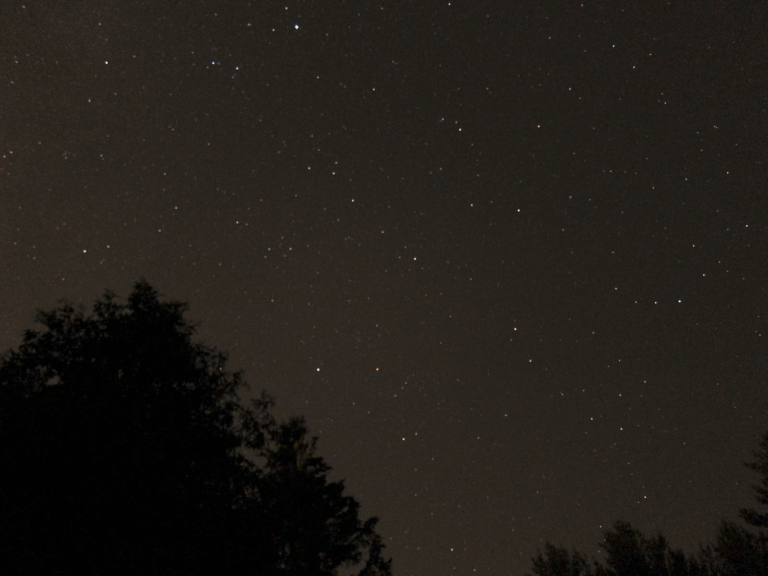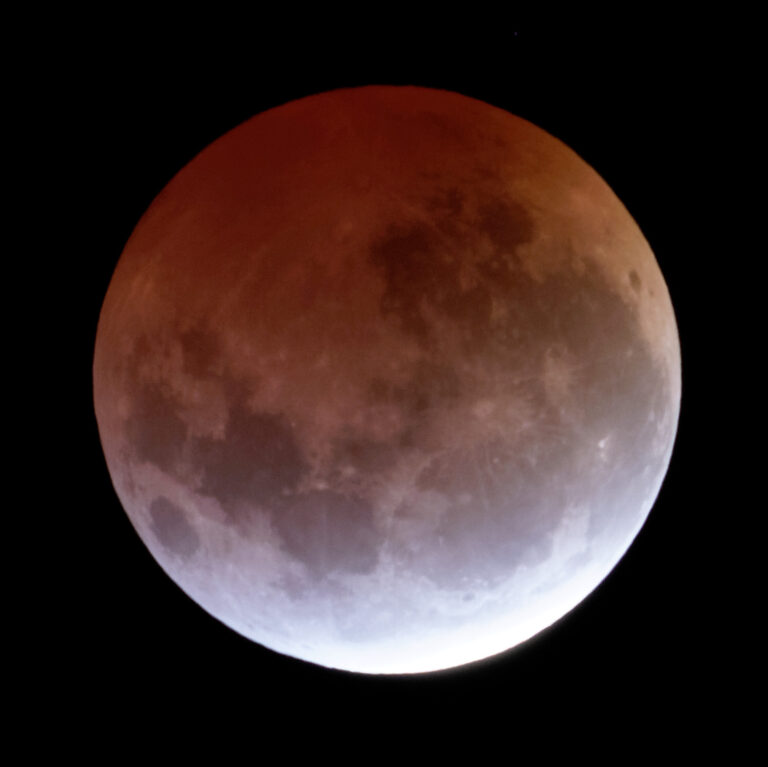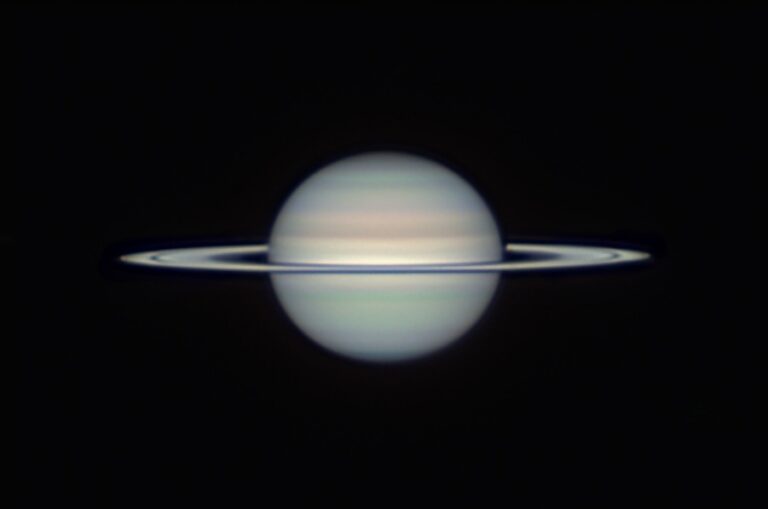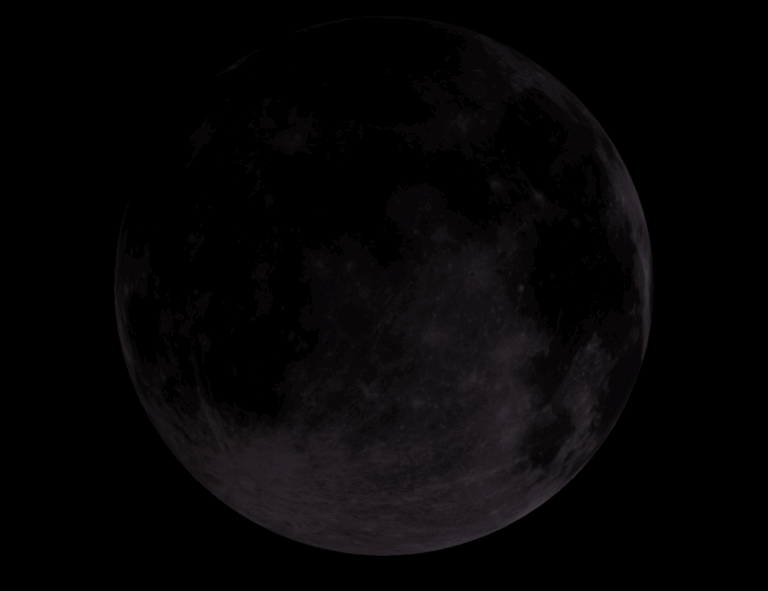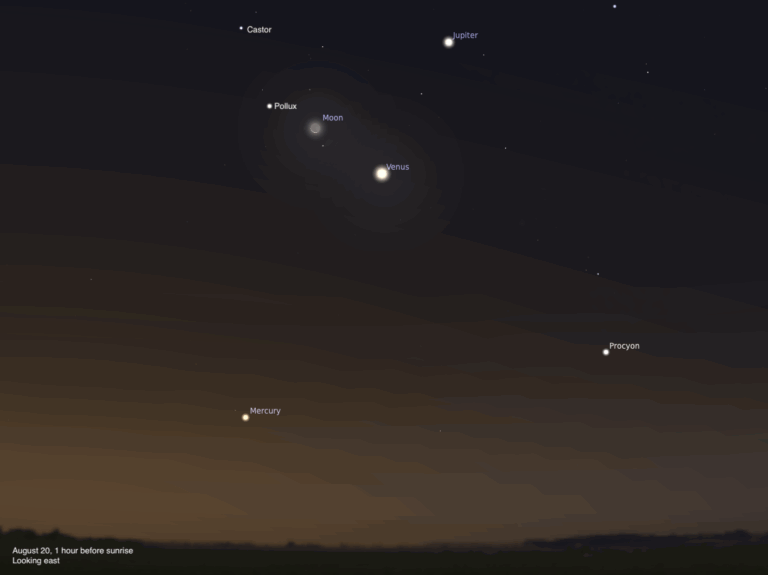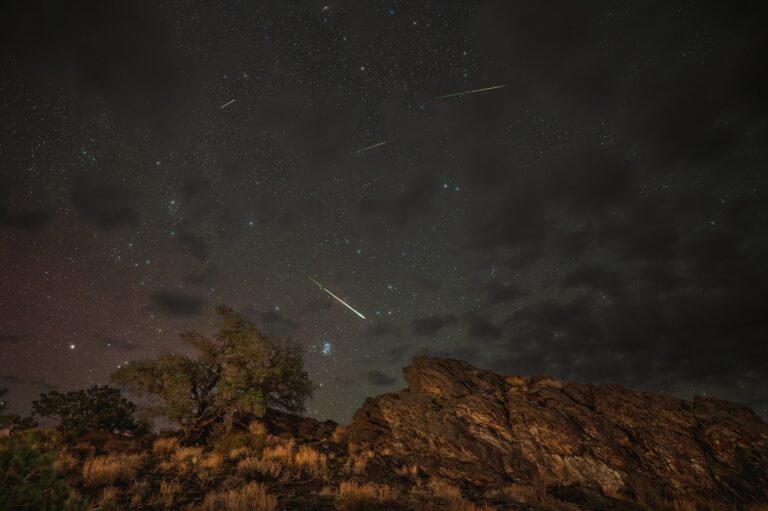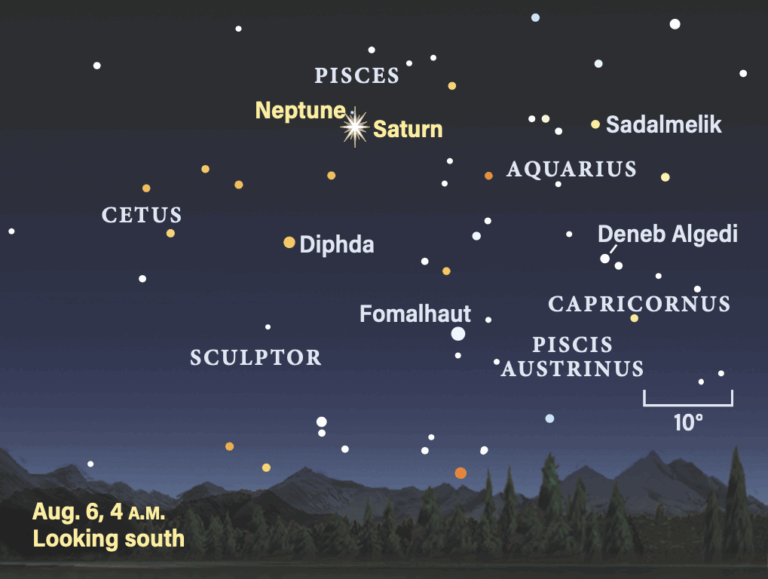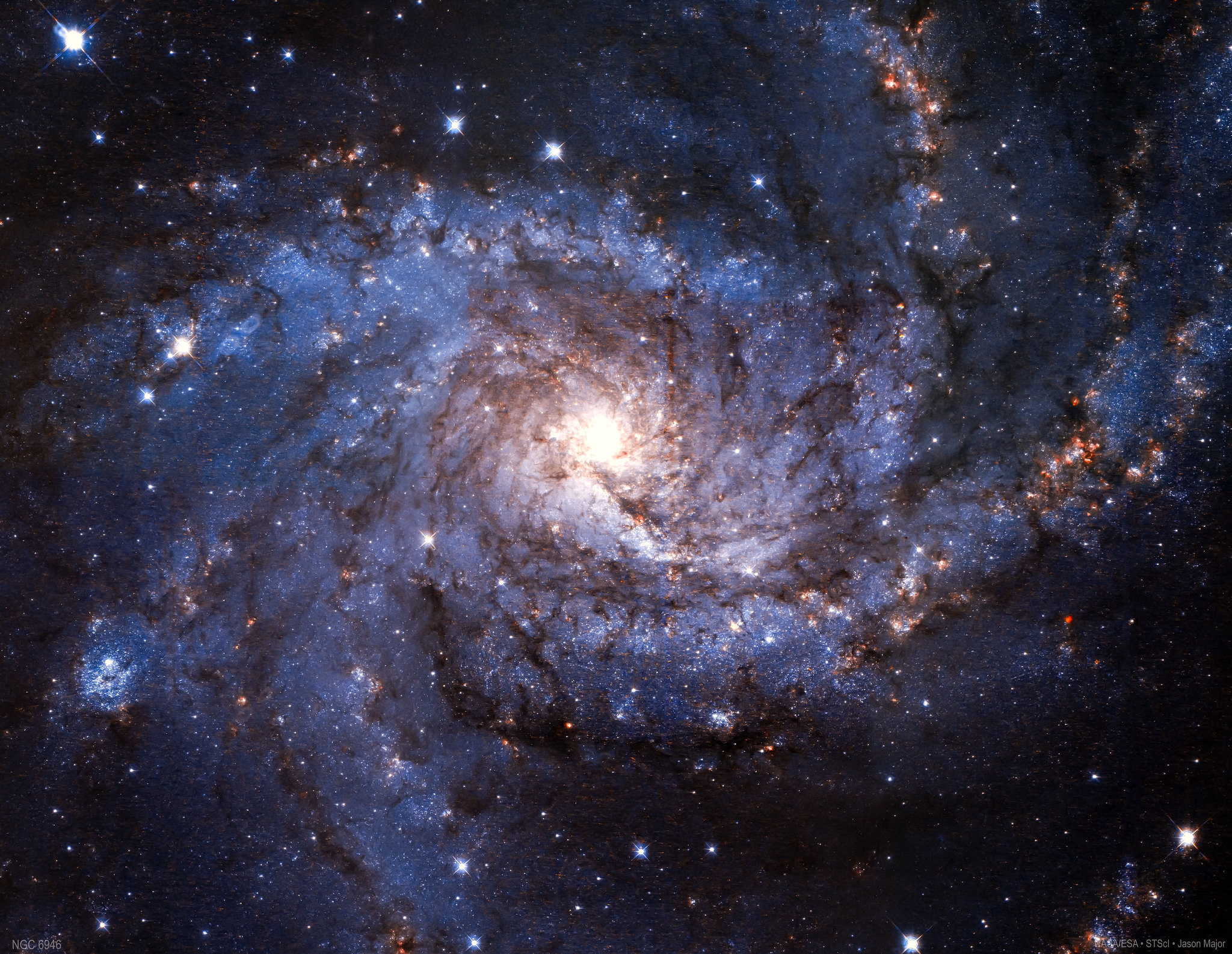
Key Takeaways:
- Mercury reached its greatest eastern elongation (26°) from the Sun on July 4th, observable in the evening sky near the Beehive Cluster (M44).
- The "Fireworks Galaxy" (NGC 6946), known for its high supernova rate, was visible in the northeast on July 4th, requiring a telescope for detailed observation.
- On July 5th, Neptune was stationary in Pisces, observable in the early morning sky near Saturn, requiring binoculars or a telescope for visibility.
- The Full Moon, also known as the Buck Moon, occurred on July 10th, appearing lower in the southern sky than usual due to a major lunar standstill, potentially exhibiting a yellowish or orange hue.

Sky This Week is brought to you in part by Celestron.
Friday, July 4
Mercury reaches its greatest eastern elongation (26°) from the Sun at 1 A.M. EDT this morning. You can view the tiny planet in the evening sky, still standing 8° high in the west 40 minutes after sunset and glowing at magnitude 0.5 in Cancer. The bright point of light can guide your way to the Beehive Cluster (M44), roughly 2° to the planet’s northwest (upper right), visible in the same field of view as Mercury in binoculars.
Once the sky grows fully dark, let’s celebrate Independence Day with some celestial fireworks — or, at least, a galaxy known for them. NGC 6946 is a spiral galaxy in Cygnus known for its high rate of supernovae: 10 of these stellar blasts have been seen in this galaxy since 1917, earning it the nickname the Fireworks Galaxy. You’ll find it some 40° high in the northeast around 10 P.M. local daylight time, in far northern Cygnus — in fact, NGC 6946 is easiest to find by hopping just 2.1° southwest of magnitude 3.4 Eta (η) Cephei in southwestern Cepheus.
The Fireworks Galaxy may glow at an impressive-sounding 9th magnitude, but because it is a relatively large (10’ in diameter) spiral galaxy, that light is spread out, making it appear dim. You can spot its fuzzy, oval-shaped glow in any small scope, but if you’re after detail such as its spiral arms, opt for the biggest optics you’ve got — 11 inches or more if you can.
The Moon reaches apogee at a distance of 251,423 miles (404,626 kilometers) from Earth this evening at 10:29 P.M. EDT. Apogee occurs when the Moon is at its farthest point from our planet in its orbit; it will reach perigee, the closest point, on the 20th this month.
Sunrise: 5:37 A.M.
Sunset: 8:32 P.M.
Moonrise: 3:13 P.M.
Moonset: 1:02 A.M.
Moon Phase: Waxing gibbous (68%)
*Times for sunrise, sunset, moonrise, and moonset are given in local time from 40° N 90° W. The Moon’s illumination is given at 12 P.M. local time from the same location.
Saturday, July 5
Neptune stands stationary against the background stars of Pisces the Fish at 11 A.M. EDT. The solar system’s most distant planet is visible in the early-morning sky, now just 1° north of the planet Saturn.
Catch the planetary pair a few hours before sunrise in the southeast, standing about 35° high at 3:30 A.M. local daylight time. They are below and slightly to the left of the Circlet asterism in Pisces. Saturn is easily visible without optical aid at magnitude 0.9, offering a bright signpost to find magnitude 7.7 Neptune, which falls below the detectability threshold of the naked eye. Instead, you can use binoculars or any telescope to find the planet, visible in the same field of view as Saturn. Neptune’s tiny disk spans just 2” at its great distance — can you tell that this “flat,” bluish-gray star is not a star at all?
Through a telescope eyepiece, Saturn shows off its lovely rings, now 40” from end to end. Several smaller, 10th-magnitude moons hover near the disk of the planet, while mid-8th-magnitude Titan, the planet’s largest moon, lies about 2.5’ west of the ringed world. Titan orbits Saturn every two weeks and with the current tilt of the system relative to Earth, we see the large moon’s shadow occasionally fall over the cloud tops. The next Titan shadow transit will be in just under two weeks, on the morning of July 18.
Sunrise: 5:38 A.M.
Sunset: 8:32 P.M.
Moonrise: 4:15 P.M.
Moonset: 1:26 A.M.
Moon Phase: Waxing gibbous (76%)
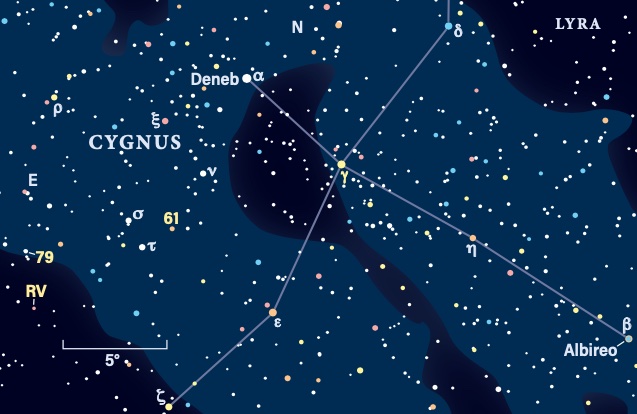
Sunday, July 6
With the bright Moon lighting the sky our focus is on easy-to-spot targets tonight, such as Albireo at the head of Cygnus the Swan. Also cataloged as Beta (β) Cygni, Albireo is a stunning double star with contrasting colors that is a fan favorite at star parties.
Already flying high in the east after dark, the cross-shaped constellation Cygnus is easy to spot with its brightest star, Deneb, at the tail of the Swan and Albireo at the head in the southwestern corner Cygnus’ domain. About 380 light-years distant and shining with a combined magnitude of 3.1, the two components of Albireo are 34” apart — easy to split with any small scope. The brighter star, also called Beta1, is magnitude 3.4 and glows with a golden hue to most observers’ eyes. Beta2 is a fainter magnitude 5.1 but gives off a blue glow, indicating it is hotter than its brighter companion.
Take some time with this pair and consider which colors you see. While most report the gold-and-blue pairing, some people see the stars as white and blue, or even yellow and green! (Although that green is a trick of the eyes, as there are no green stars.)
Beta1 is a double star as well, but these components are too close to split in a telescope. The two stars in this system are both a few times the mass of the Sun and take about 100 years to orbit each other, according to the stellar expert Jim Kaler. By contrast, the visible components of Beta1 and Beta2 take 75,000 years to orbit each other!
Sunrise: 5:38 A.M.
Sunset: 8:31 P.M.
Moonrise: 5:19 P.M.
Moonset: 1:54 A.M.
Moon Phase: Waxing gibbous (84%)
Monday, July 7
The Moon passes 0.4° south of the red giant star Antares in Scorpius at 2 P.M. EDT. The two stand high in the southern sky after dark, with the Moon now 5° from the bright star, to Antares’ lower left.
Antares is Scorpius’ alpha star and is often depicted as the heart of the Scorpion. Glowing at magnitude 1.1, it is a red supergiant some 550 light-years away. Even without a telescope, its reddish hue is unmistakable, and plays a large part in the star’s name, which is often translated as “rival of Ares” (Mars) because its color is so close to that of the Red Planet in our sky. You can compare for yourself this evening in the hour or two after sunset — around 10 P.M. local daylight time, as Antares hangs in the southern sky, Mars is still visible above the western horizon, near the back feet of Leo the Lion. Shining at magnitude 1.5, Mars is easy to find to the upper left of the bright blue star Regulus. The planet’s ruddy color should be visible to the naked eye.
Standing above the curved tail of Scorpius, the Moon is nearly Full. Some 93 percent of its nearside is now illuminated, with only a sliver of the western limb still in darkness.
Sunrise: 5:39 A.M.
Sunset: 8:31 P.M.
Moonrise: 6:21 P.M.
Moonset: 2:28 A.M.
Moon Phase: Waxing gibbous (90%)
Tuesday, July 8
Climbing to 60° high in the east two hours before sunrise, the constellation Andromeda lies just to the upper right of the easy-to-spot W-shaped constellation Cassiopeia. This morning, let’s enjoy a view of the star cluster NGC 7686 in northwestern Andromeda, about 3° northwest of 4th-magnitude Lambda (λ) Andromedae.
This bright group of stars shines at magnitude 5.6 — visible to the naked eye for those with good low-light vision and clear, light-pollution-free skies. The 15’-diameter cluster is also readily visible through binoculars or any telescope; particularly at low power, Astronomy Associate Editor Michael Bakich notes NGC 7686 looks like a triangular grouping of stars. Larger apertures and higher magnifications will bring out more and fainter stars.
Although typically classified as an open cluster, astronomers have noted that based on the characteristics of its stars, NGC 7686 is more likely a superposition of many stars at different distances creating a visual overdensity, rather than a proper cluster.
Sunrise: 5:39 A.M.
Sunset: 8:31 P.M.
Moonrise: 7:20 P.M.
Moonset: 3:10 A.M.
Moon Phase: Waxing gibbous (95%)
Wednesday, July 9
Venus hangs below the Pleiades in the early-morning sky today. The bright planet is quickly closing in on Taurus’ brightest star, Aldebaran, which it will pass closely next week.
Step outside 90 minutes before sunrise to spot blazing Venus (magnitude –4.1) about 8.4° below the Pleiades open cluster (M45) in the east. The planet is more than 10° high and will continue rising as dawn begins to approach. About 5° below and slightly to the left of Venus is magnitude 0.9 Aldebaran, a red giant star that shines among the scattered suns of the Hyades open cluster sprinkled across the Bull’s nose. As Venus closes in, it will give Taurus the appearance of two bright eyes, rather than only one.
Through a telescope, Venus’ 17”-wide disk is now 67 percent lit. As the planet appears to sink toward the horizon day by day, it will wax as more of the cloud tops fall in sunlight.
While you’re up, take some time to enjoy the Pleiades through your telescope as well. Low powers work best for viewing the nearby open cluster, which spreads across more then 100’ of sky.
Sunrise: 5:40 A.M.
Sunset: 8:30 P.M.
Moonrise: 8:12 P.M.
Moonset: 4:01 A.M.
Moon Phase: Waxing gibbous (98%)
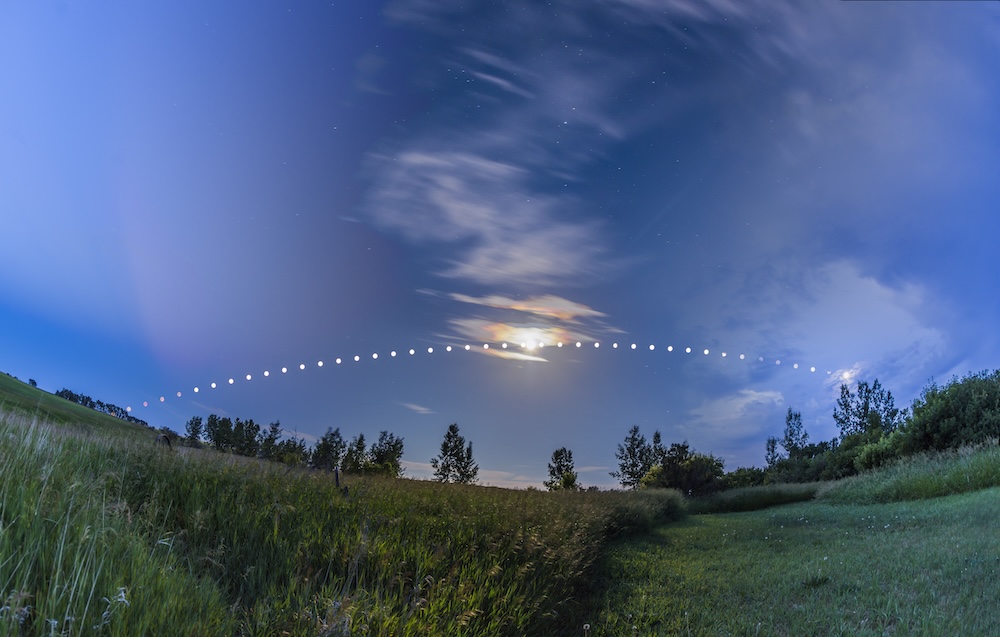
Thursday, July 10
Full Moon occurs at 4:37 P.M. EDT this afternoon and will rise in the southeast around the time the Sun is setting in the northwest. The July Full Moon is also called the Buck Moon, and this month our satellite also rises at its farthest point south in 18.6 years: some 7° more southerly than usual. Over the course of the night, the Moon will travel from southeast to southwest, arcing low through the southern sky. Even at its highest, about an hour after local midnight, the Moon never climbs above about 20° in altitude.
We are currently in the midst of a phenomenon called a major lunar standstill, which occurs because of the inclination and motion of the Moon’s orbit around Earth. During this time, the Moon rises and sets at its greatest northern and southern positions in our sky, and furthermore these positions don’t appear to significantly change from month to month for a time — hence, the term “standstill.”
Because it is tracing a low arc through the sky, the Moon’s light must pass through more of Earth’s atmosphere to reach our eyes. You may notice the Full Moon looking yellow or even orange, rather than its normal bright white, as a result.
Sunrise: 5:41 A.M.
Sunset: 8:30 P.M.
Moonrise: 8:57 P.M.
Moonset: 5:01 A.M.
Moon Phase: Full
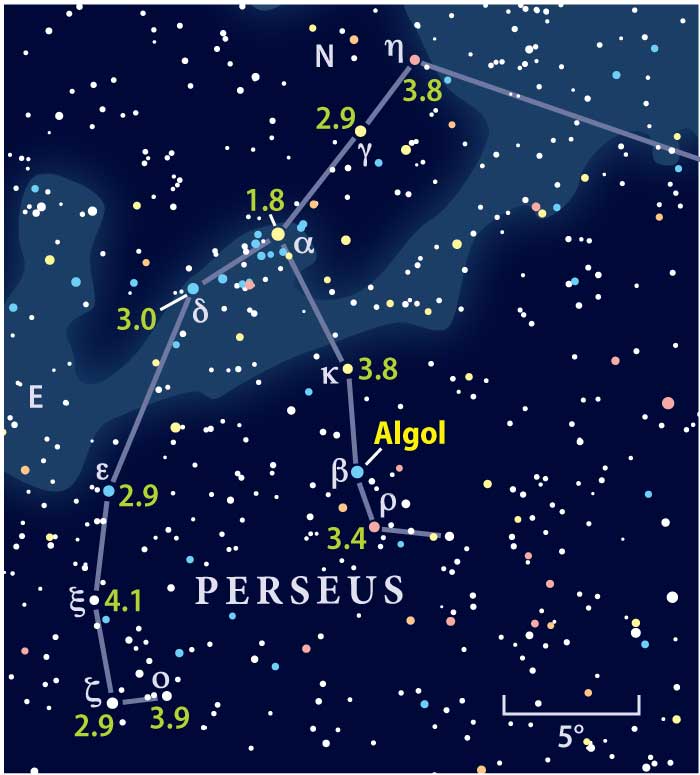
Friday, July 11
There’s a demon in the early-morning sky, amid the stars of Perseus the Hero. Second-magnitude Algol (Beta Persei) is also famously known as the Demon Star, and you can spot it two hours before sunrise, standing 30° high in the east, to the upper left of the Pleiades.
Algol is dubbed a demon because every 2.867 days, its brightness changes noticeably — even to the naked eye. It suddenly fades from magnitude 2.1 to magnitude 3.4 in a matter of hours, losing some 70 percent of its brightness for a brief time before recovering once more. And then it happens again, 2.867 days later. And again. And again.
But Algol is not a variable star. Instead, its brightness changes because it is an eclipsing binary: a binary star system that is tilted just so toward Earth, such that we see the companion pass in front of Algol once every orbit. As the companion partially blocks Algol’s light, we see the star appear to plummet in brightness, before brightening again as the secondary moves out of the way. Careful observation also shows secondary eclipses, in which the system appears to dim again — only slightly — as the fainter star passes behind Algol on the other side of its orbit and we lose its contribution to the overall amount of light we see.
The Algol system recently reached a minimum yesterday morning, so it currently appears at its “normal” magnitude of 2.1. It will again reach a minimum the morning of the 13th, so we’ll check in with it at the same time we observe Venus standing near the bright star Aldebaran in the morning sky.
Now in Capricornus, the Moon passes 0.02° north of Pluto at 7 P.M. EDT. Unfortunately, even after this region rises tonight, the bright moonlight will make Pluto an immensely difficult challenge — on top the normal challenge it presents to observers, requiring large scopes and good seeing to make out.
But we won’t be forgetting Pluto entirely — the distant dwarf planet is approaching opposition, when it will appear best in the sky, so we’ll check it out later this month.
Sunrise: 5:41 A.M.
Sunset: 8:30 P.M.
Moonrise: 9:34 P.M.
Moonset: 6:07 A.M.
Moon Phase: Waning gibbous (99%)

